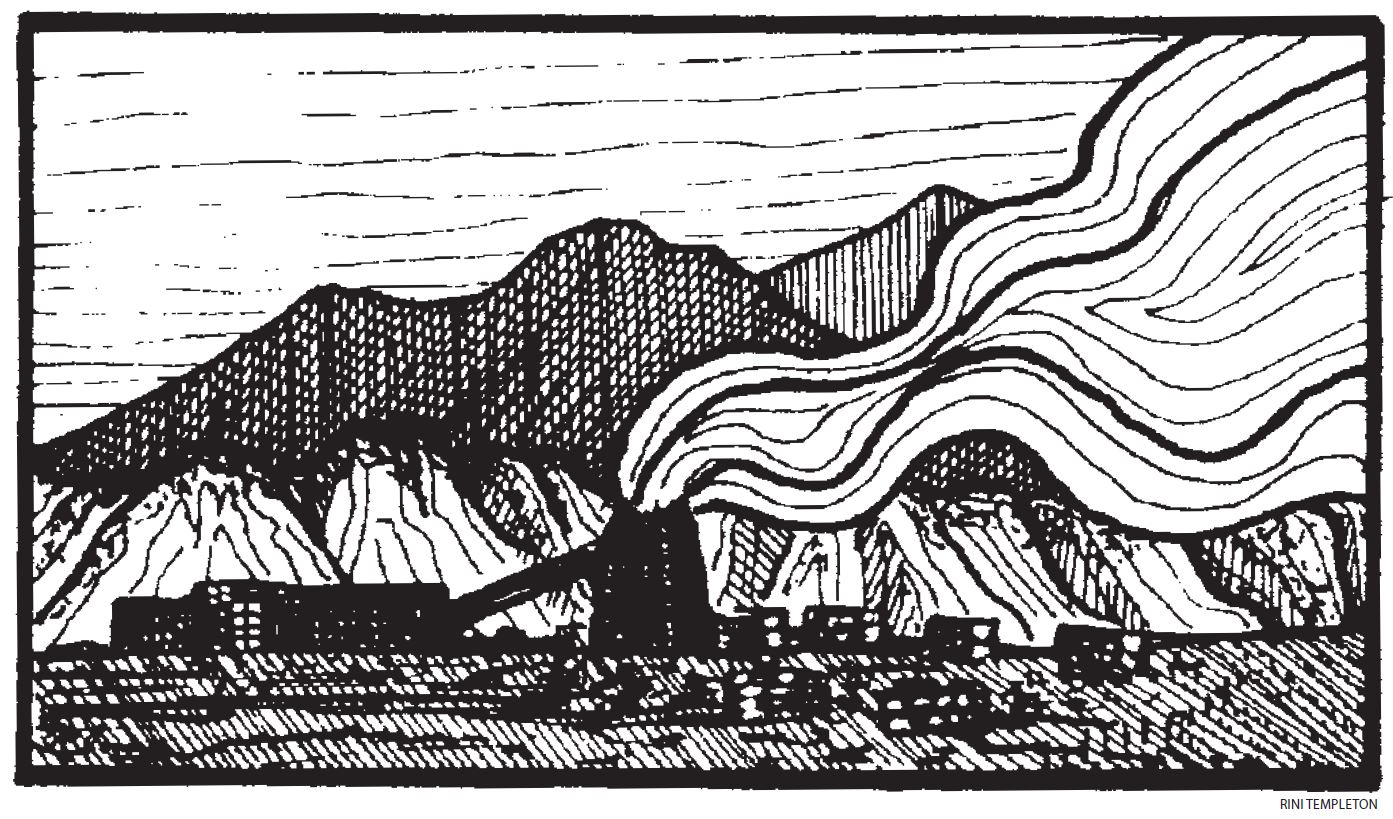I taught a 6-week unit on our power to stop climate change as part of our 10th grade English class. I designed the unit to address the 10th grade essential topic of power and to work towards district curriculum standards on rhetorical analysis and synthesis. Thankfully, my district teaches climate science in 9th grade, including climate change, so students already had a lot of background knowledge we could start from in order to explore the social and rhetorical aspects.
We began the unit by playing the Thingamabob Game. After I introduce the basic concept, I asked teams to predict what they thought would happen. They all confidently asserted that their team would win! At first it took me a long time to add up the columns once each team turned in their production numbers, so in the next classes I used a spreadsheet to speed everything up and give students more discussion time. Ultimately, most of my classes failed to protect the planet, but one class did work together to keep the production low enough to stay under the limit! I asked them why they didn’t try to win it, and a couple teams said they wanted to save the planet while others said they just weren’t hungry. I had offered granola bars as the incentive, which most students were excited about, but perhaps chocolate bars would have been better. We had about 60 minutes for the whole game, which was about enough time for the later classes once I started using the spreadsheet, but the earlier classes did run out of time to have a proper discussion afterward.
Then the students read and discussed texts about climate justice. They did a cold read of “Time Capsule Found on the Dead Planet” by Margaret Atwood, wrote about its theme, and then shared their writing in discussions. Students found the poem’s layers of symbolism and its historical sweep somewhat tricky, but doing the Thingamabob Game at first helped them move in the right direction in their partner discussions. Next, they listened to “Dear Matafele Peinam” by Kathy Jetnil-Kijiner and explored the way she uses metaphors, anaphora, verbal irony, and imagery. Students really liked this text! We worked on identifying those rhetorical strategies with specific quotes and then analyzing the effect of each quote on the reader.
Next, students split into teams to debate whether we have the power to stop climate change, according to these authors, with half focusing on Atwood’s poem and half focusing on Jetnil-Kijiner’s poem. I asked students to focus on thinking about what the two poems suggest, but I enjoyed hearing students beginning to share their perspectives on whether (and how) we can stop climate change. Most students were actually quite pessimistic and fatalistic about our power to stop climate change, far more so than I expected, and some referenced the Thingamabob Game as evidence that we cannot stop climate change. So it felt like the right moment to do the Stories From the Climate Crisis Mixer in order to help us focus on some of the activists and people affected by climate change. Most students seemed to find this exercise fun, though a few of the more grade-oriented students rushed to fill out their scavenger hunt sheet, as if that was the point. I wish I had given a little more emphasis on the exploratory nature of this exercise for thinking about the essential question, instead of just pitching it as a fun way to get to know more about real people involved in the issue.
At this point we began moving toward the final essay for the unit, a synthesis essay bringing together at least three texts (Jetnil-Kijiner, Atwood, and one other of the student’s choice) and presenting the student’s opinion on whether we have the power to stop climate change. I offered students the choice to read “The Day It All Ended” by Charlie Jane Anders or “The Precedent” by Sean McMullen. I gave a brief description of the two stories (“silly and happy or dark and disturbing?”) and let students read and discuss their chosen story in small groups. Both stories required a lot of inferencing and had some tricky vocabulary; “The Precedent” was longer but slightly easier for most students to read than “The Day It All Ended.” I had response questions for each story focusing on how the story presented climate change, what people tried to do about it, why they were or were not successful, and so on. I also asked students to contribute to a class list of rhetorical strategies each author used to make their points. Students used these resources to write their final synthesis essay for the unit, bringing together the authors’ perspectives with each student’s own perspective on what we can do about climate change.
I should note here that by the end of the unit I had a couple students (and one set of parents) complain about the framing of the basic question, since they thought it wasn’t fair to assume that climate change was real, but I was happy to have the opportunity to speak to them about it. While I don’t know that I changed anyone’s minds who was already a skeptic, I do think the unit was meaningful and relevant to students’ concerns, and helped them meet the curriculum requirements by investigating a topic of extreme importance to our futures. In the future, I’d offer a few more choices for the readings. I had a few struggling readers who asked me for a shorter 3rd reading, and I ended up providing them a link to the excellent youth-authored poems at climatespeaks.org/performance. I also had a student who wanted to analyze the rhetoric of Greta Thunberg’s UN speech in his essay, which also worked well. I looked at using a chapter or two from Don’t Even Think About It, the book about cognitive and social barriers to addressing climate change, but I wasn’t able to squeeze it into the time we had.








Twitter
Google plus
LinkedIn